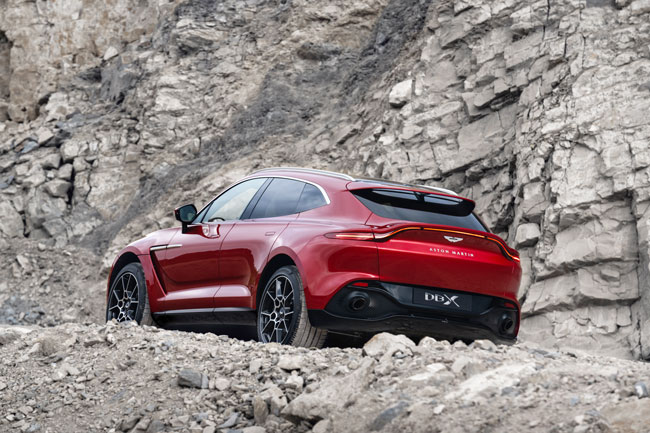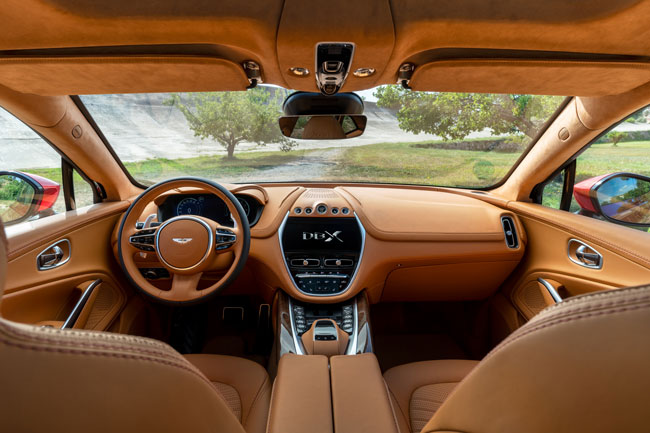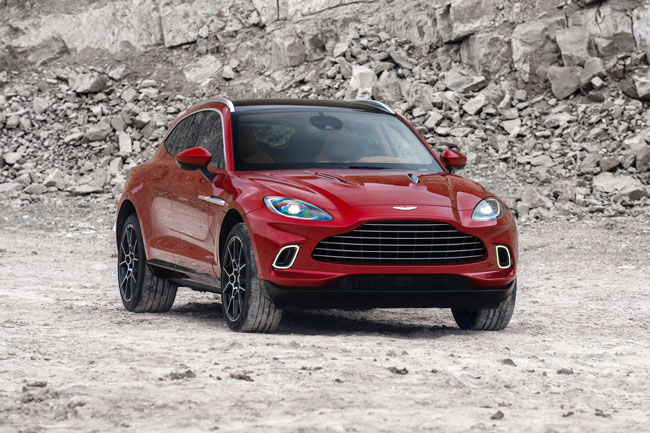Aston Martin enters the SUV market with the DBX
Aston Martin, maker of sleek and sexy luxury sports cars, has joined the throng of high-end manufacturers looking to make their mark in the ever-growing SUV sector with this, the recently revealed DBX.
The UK manufacturer joins Bentley (with the Bentayga) and Rolls-Royce (with the Cullinan) as recent recruits to the luxury end of the SUV market, while Ferrari has flagged it will make its entrance into the sector at some point with the Purosangue. Porsche, Lamborghini, Audi and others are already there.
With the DBX, Aston Martin look to have made a decent splash.

More than four years of development have gone into the SUV and judging from the design, the finish and the performance figures being touted, they seem to have done a good job.
Distinctly an Aston Martin thanks to the unique grille design, the DBX is built using bonded aluminium, making the body structure light and stiff (the vehicle has an overall kerb-weight of 2,245kg). That helps with performance and handling which are, as you would expect from Aston Martin, a focus of the DBX.
There’s adaptive triple volume air suspension, and an electric anti-roll control system (eARC) and electronic adaptive dampers.
The air suspension can raise the ride height by 45mm or lower it by 50mm. The system can be further programmed to aid with ingress, egress and loading requirements.
Power for the DBX comes from a new version of the 4-litre, twin-turbocharged V8 engine found in the company’s DB11 and Vantage cars. The engine gives the DBX output numbers of 404kW and 700NM of torque. The V8 has cylinder deactivation for better fuel economy, but it can still punch the DBX from 0 to 100km/h in 4.5 seconds and on to a top speed of 290km/h.

Power and torque are fed through a nine-speed automatic gearbox allied to an all-wheel drive system with active differentials featuring an active central differential and an electronic rear limited slip differential (eDiff). This, says Aston Martin, allows the torque to be moved precisely both fore and aft and also across the rear axle.
The company’s first ever full-size five-seat model, the DBX has 632 litres of boot space and 40:20:40 split folding rear seats.
As expected, the DBX is packed with the latest technology including, the company says, ‘all available active safety systems’. In the cabin, there are two high-definition TFT screens. The first is a 12.3-inch screen that displays a digital instrument cluster. The main display for the satellite navigation is a 10.25-inch TFT screen that sits flush with the dash in the centre of the car.
Mobile phone operating system connectivity is standard in DBX, as is Bluetooth connectivity with audio streaming and FM/AM radio along with DAB. USB ports and 12v sockets are positioned in both the front and rear. An ambient lighting system features a choice of 64 colours which can be customised independently for the front and rear cabin.
There is also a 360-degree camera system allied to front and rear parking sensors and there’s a park assist system too.
Aston Martin also offers plenty of optional accessory packages for the DBX. For example, the Pet package includes, amongst other things, a portable washer to help clean the dog after a walk. Alternatively, the Snow package offers to make a ski trip more comfy by including boot warmers!
Fit and finish is, as you would expect, look top notch. The handcrafted interior includes sports car seat packaging in the front and the seats are trimmed in full grain leather. Both the headlining and electric roof blind are available in a Alcantara finish.

Other materials used include wood, composite and metal veneers and these can be tailored to taste.
The DBX is priced at £158,000 in the UK ($AU300,000). Deliveries are scheduled to begin in Q2 2020.
Source: Motor Trader E-Magazine (Dec 2019/Jan 2020)
18 Dec 2019










